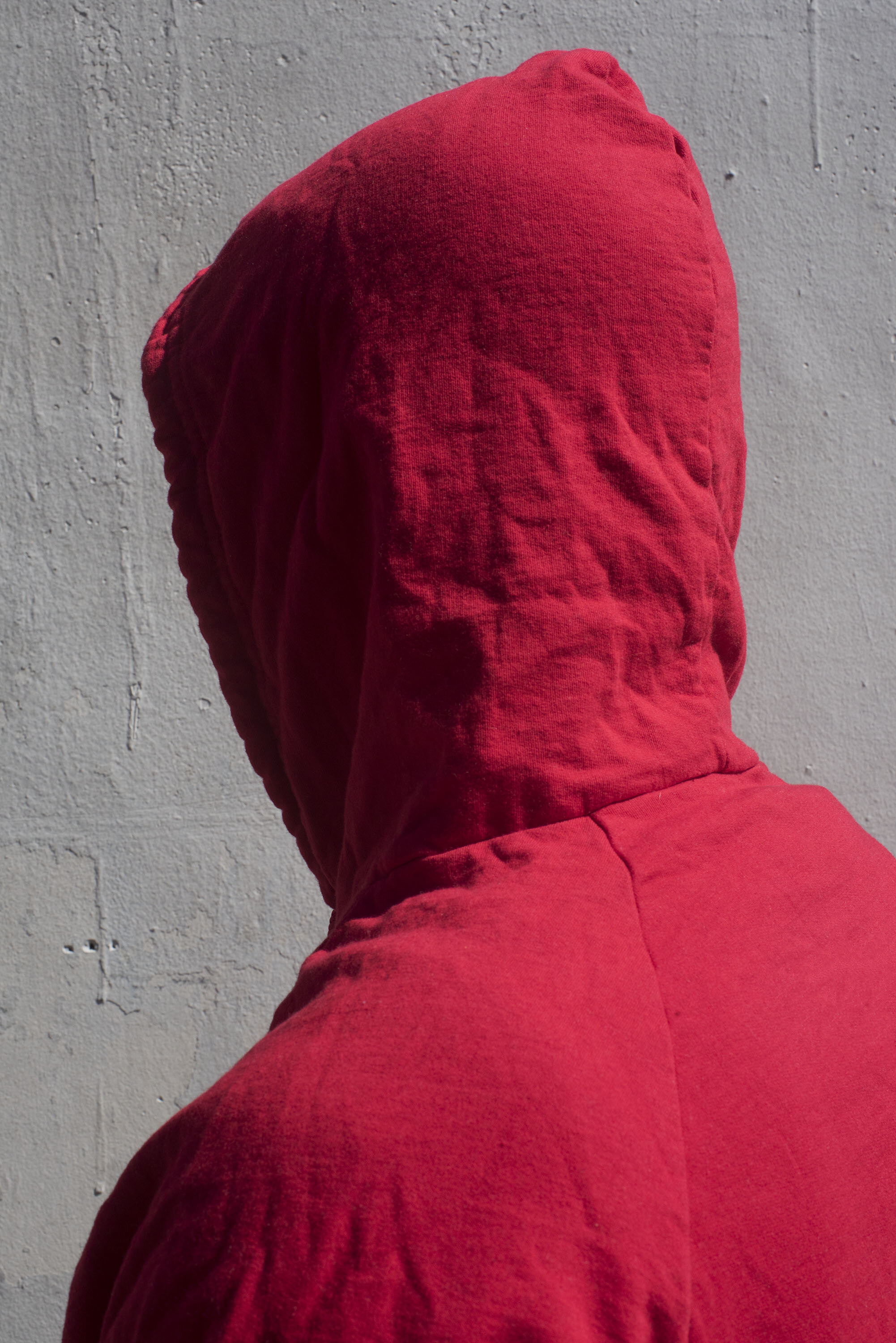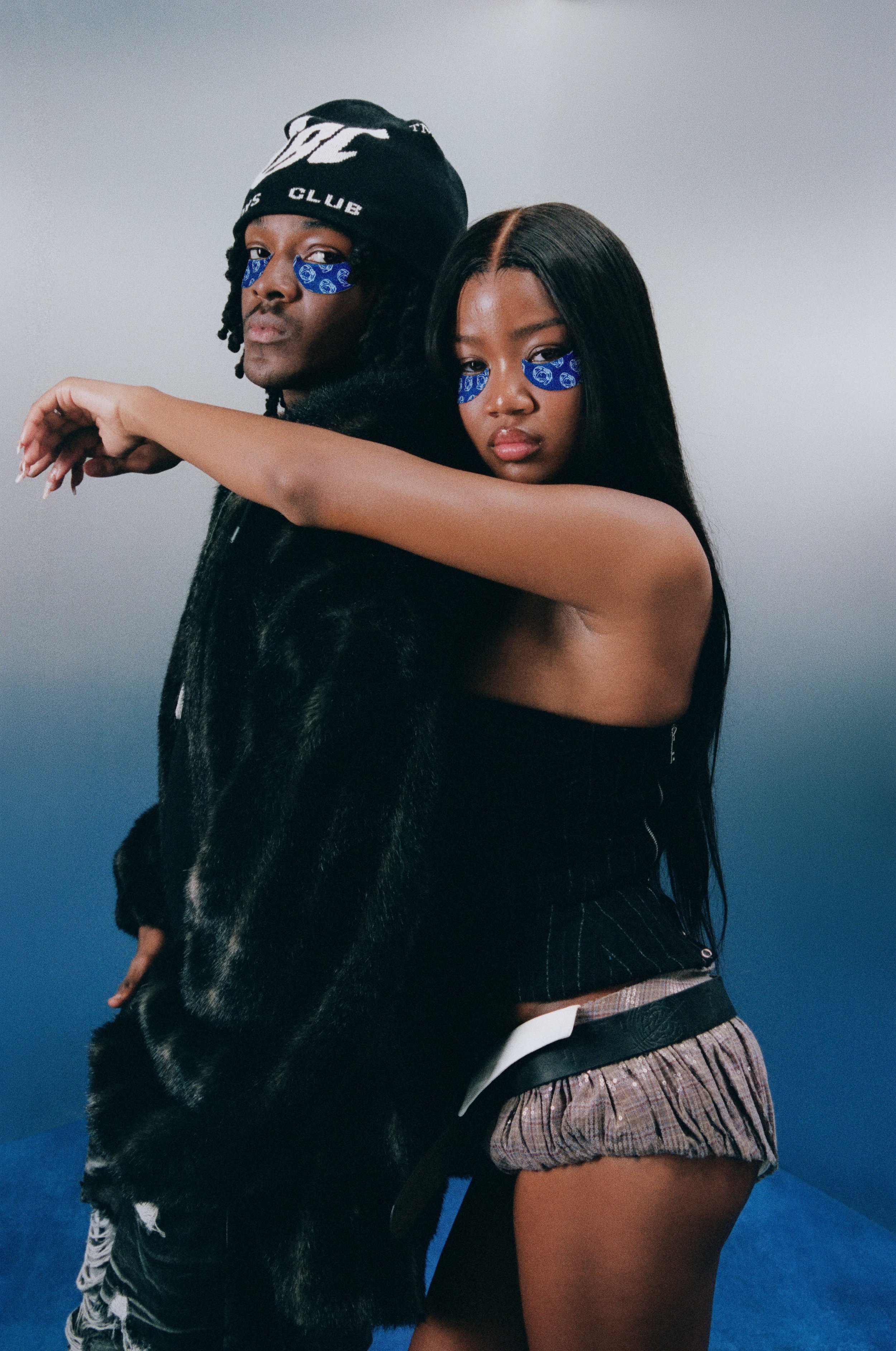"The Hoodie" And Why It's the Only Piece of Clothing That Really Matters
John Edmonds, Untitled (Hood 13), 2018
Originally written for Kulture Hub by Cassell Ferere
Now and then we are compelled to wear our favorite hooded sweatshirt, or hoodie because it makes us feel comfortable. On the other hand, hoodies tend to make people – society – uncomfortable with its image.
Writer and curator Lou Stoppard has put the hoodie and the ideas around it into question with an exhibit called “The Hoodie” at the Het Nieuwe Instituut in Rotterdam, Netherlands, currently open to the public.
With over 60 hoodies on display, that are diverse in their symbolism, and mixed media, including film, photography, magazine covers, and music that will tell the story of the hoodie for attendees of the gallery.
Model Adut Akech wears Balenciaga in i-D's The Earthwise Issue, Fall 2018. Photograph: Campbell Addy. Styling: Alastair McKimm
Lou Stoppard, who started at renowned image-maker Nick Knight’s SHOWstudio as an intern, then moving into an editor position where she would be inclined to critique fashion and question those involved about their thoughts and decisions.
She has been involved in curation before, working on the North Exhibit at Open Eye Gallery with co-curator Adam Murray. Their exhibit was an adulation of the North displaying a majority of documentary photography and fashion editorials that highlighted the northern area of England.
The Hoodie, 2019. Photo Johannes Schwartz.
The Life of a Hoodie
The Hoodie, 2019. Photo Johannes Schwartz.
Hoodies are a much broader subject matter that all of us can relate to oddly. Whether you’ve been a scholar or athlete, the hoodie has been apart of your life. The hood goes as far back as medieval times, mostly worn by religious figures.
Moving to the 1930s, Champion made it specific for warehouse workers in upstate New York and then adopted by the Military as garments for training exercises and physical education classes.
Fast Fashion
Exactitudes 168. by Ari Versluis and Ellie Uyttenbroek – EUnify hoodie by Souvenir Official.
Fast forward and the hoodie has come into its own from the NYC streets and early hip-hop culture in the ‘70s to the ‘90s where hip-hop flourished and skate culture cemented.
Notorious B.I.G. mentioned a liking to “[black Tims and] black Hoodies” on his “Suicidal Thoughts” record off his first album. Now we can spot our tech gurus wearing them all over Silicon Valley; Mark Zuckerberg has been keen on this.
Many fashionistas going for a casual, leisurely look love to pair it with jeans and sneakers. Awesome sneaker designs to match your hoodie can be found on https://fastsole.co.uk/sneaker-release-dates/brands/new-balance/ or similar websites. For something more dressy, pair the hoodie with a skirt or dress pants and heels.
Prem Sahib, Umbra, 2019. Photo: Plastiques. Courtesy the artist and Jhaveri Contemporary.
Sketch of the Unabomber, 1995.
If fashion is your thing, you can recognize the familiar look of the hoodie and associate it with many things we don’t necessarily see as an infringement on societal norms. Contrasting thoughts from a more conservative crowd suggest an unnecessary evil stems from wearing hoods, projecting onto all those who can see said ‘hoodie’.
This was most present when the Unabomber, a white man, was terrorizing America’s postal system and a sketch of the percieved bomber wore a hood with dark sunglasses.
High Fashion
Photo credit: Gio Staiano. Vetements Ready To Wear Fall Winter 2016.
Designers have used the hoodie as a bread and butter retail product, as merchandise, as a sublime message to the world; particularly when Vetements’ designer Demna Gvasalia chose to add text to some hooded garments, saying things, like, “May the bridges we burn light the way,” expressive of the youth culture and its innate resilience.
Or how about this past Men’s SS 2020 season when streetwear brand BsTroy shook America with when it debuted bullethole riddled hoodies to raise awareness to gun violence in schools. The hoodies displayed the names of just a few schools involved in mass shootings in recent years.
BsTroy Men’s SS 20202 Runway Show, 2019.
Athletes wear a hood as a sign of determination (Melo) or in defeat. Reflecting on Cam Newton’s hoodie moment, being called a “thug” on social media after a Super Bowl 50 post-game interview during the playoffs. Subjecting all hoodie wearers to the same scrutiny is what is to be explored at “The Hoodie” exhibit.
Fashion has taken note of this bias and has always been pioneers of breaking stereotypes. Even Nike noticed, implementing hoods onto the traditional NBA warm-up uniforms back in 2017 in reaction to the climate, making a bold fashion statement for a mostly Black league.
The Hoodie, 2019. Photo Johannes Schwartz.
Haters Gonna Hate
Figures like George Zimmerman have stereotypically demonized the hoodie, especially when worn by young Black males. In 2012, Zimmerman infamously describing Trayvon Martin’s hoodie as a reason for his suspicion. This cost Trayvon his life.
Zimmerman lawyers then coin their “hoodie defense” as a legal argument that Martin is at fault for wearing a hoodie. This spawned the Black Lives Matter movement and protesters adopted the hoodie as an emblem of the cause.
The Hoodie, 2019. Photo Johannes Schwartz.
Geraldo Rivera then suggests that [young] Black people to stop wearing hoodies. And in 2015, three years after Trayvon, Don Barrington, Oklahoma 31st district senator at the time, suggested and pushed for a bill to criminalize the wearing of a “robe, mask or other disguise[s]” in public.
That this would “intentionally conceal the wearer’s identity”, in any case, the hoodie would-be victim to this bill.
The Hoodie, 2019. Photo Johannes Schwartz.
Hoodie Threads
The hoodie is a subject tearing society apart from the seams. What is to come from an exhibit that highlights that, is how we can come to terms with how effective fashion can be to our cultures. Stoppard is exploring the nuances that move people to emotion when wearing a hoodie.
Through nostalgia of industry, we relate to the garment; many brands if not all have designed hoodies with specific or non-specific intent. The exhibit is expected to be a tense but enlightening journey through the connotations of the ever-expressive hoodie; a “storyteller”.
Photo credit: John Akehurst. Lucy + Jorge Orta - Refuge Wear Intervention, London East End 1998
The hoodie is a provocative piece of clothing, stirring up socio-political fears and aggression toward its existence while creating a sartorial place of comfort for the wearer. “The Hoodie” exhibit explores those ideas and the many expressions of hoodie culture.
Whether its Trayvon Martin’s style of dress, Vetements choice words to complement the rebelliousness of the hoodie, the hood is a two-way mirror of our entitled safety and our percieved insecurities.
Devan Shimoyama. February II, 2019.
If you’re in Rotterdam or planning to visit the Netherlands this season go check out “The Hoodie” by Lou Stoppard.
The Hoodie, 2019. Photo Johannes Schwartz.
Comment and let us know what’s on your PAGE.
Featured





















Miami Art Week 2025 Powered by Art Hearts Fashion closed out the year with a high-impact, citywide series of runway shows, designer debuts, and star-studded events across Miami’s most iconic venues, celebrating global creativity, inclusivity, and the intersection of fashion, art, and culture.